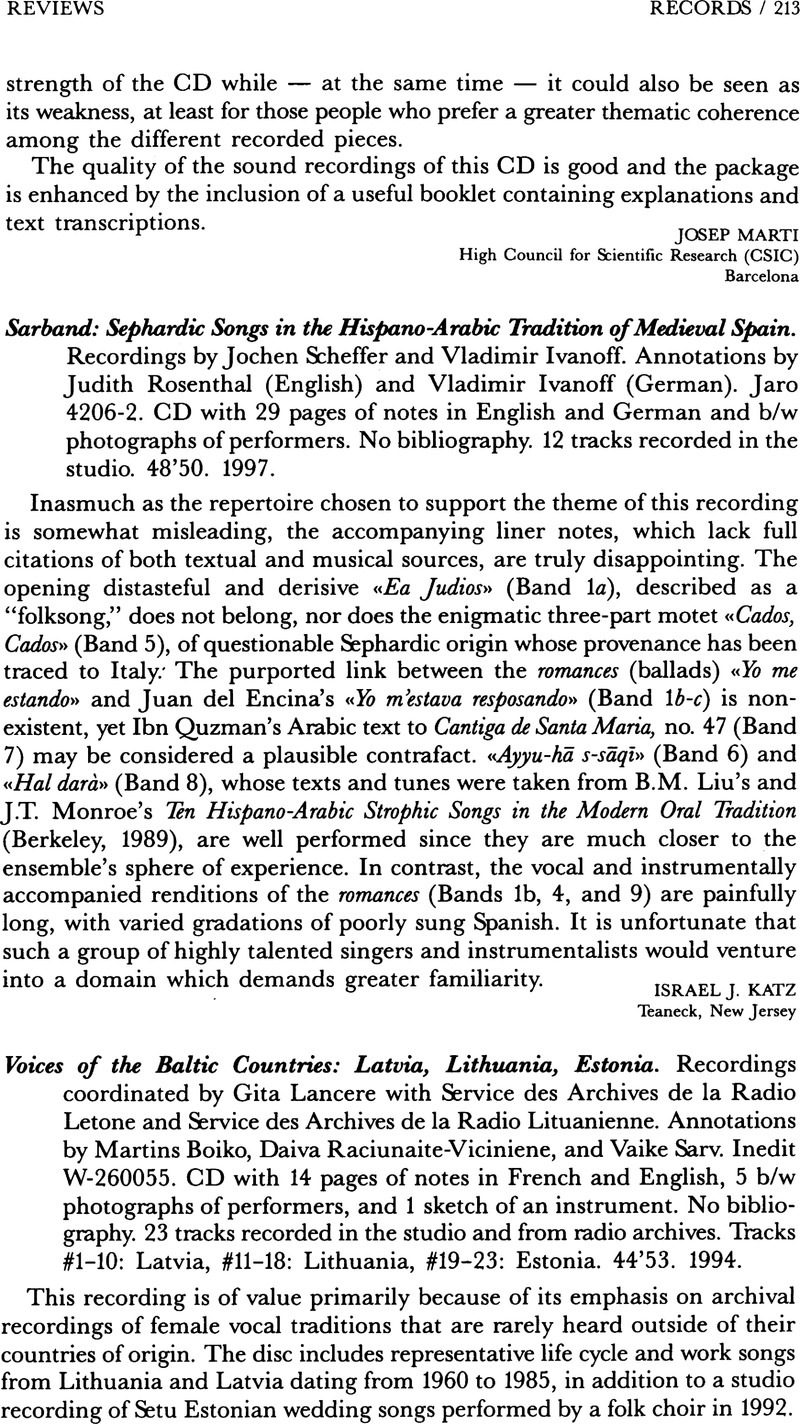No CrossRef data available.
Published online by Cambridge University Press: 07 March 2019

1. See Buchanan 1997 for an in-depth discussion of this phenomenon in reference to Bulgarian music: Donna Buchanan, Review Essay: “Bulgaria's Magical Mystere Tour: Postmodernism, World Music Marketing, and Political Change in Eastern Europe.” Ethnomusicology 41(1):131–157.CrossRefGoogle Scholar